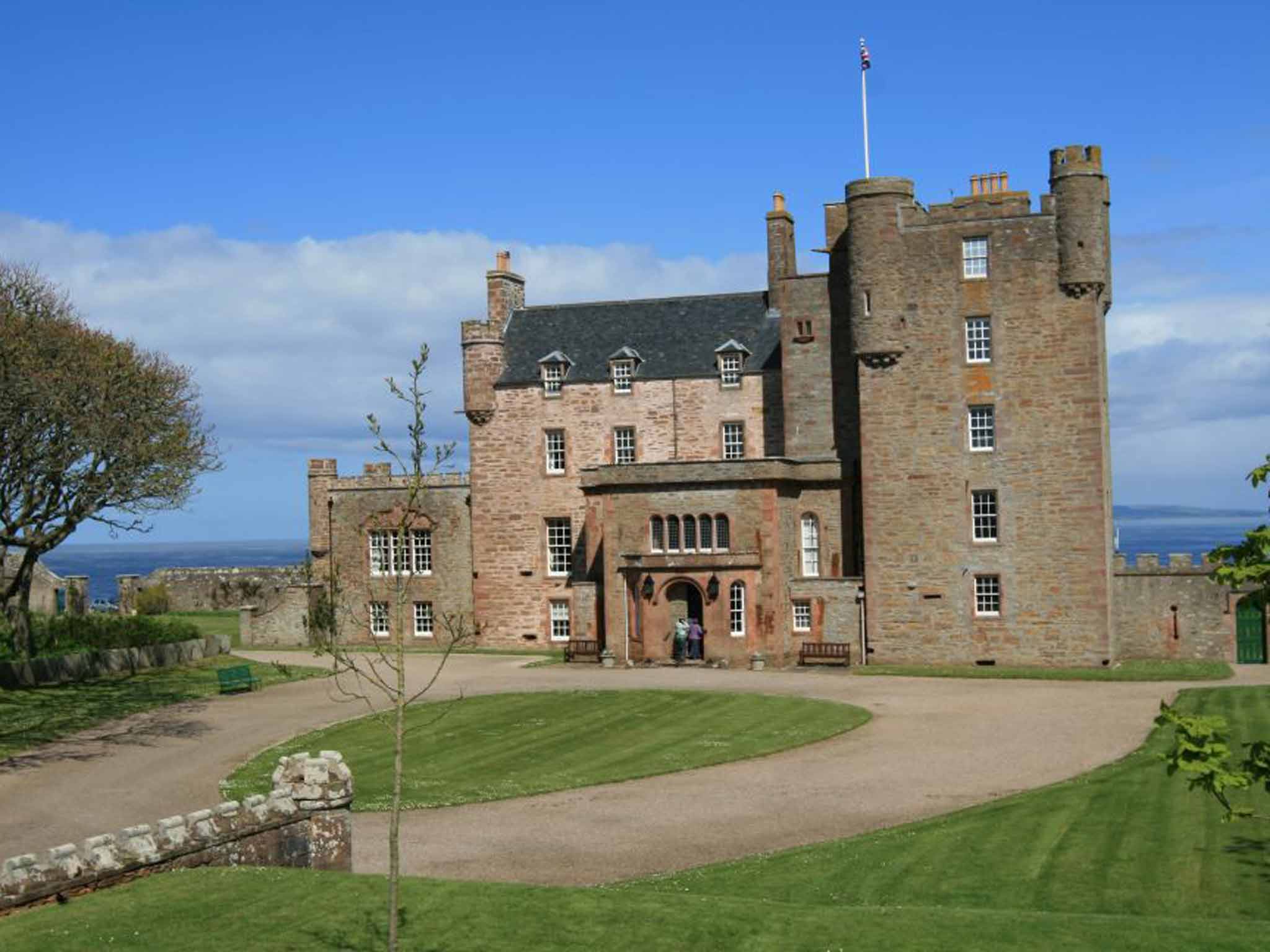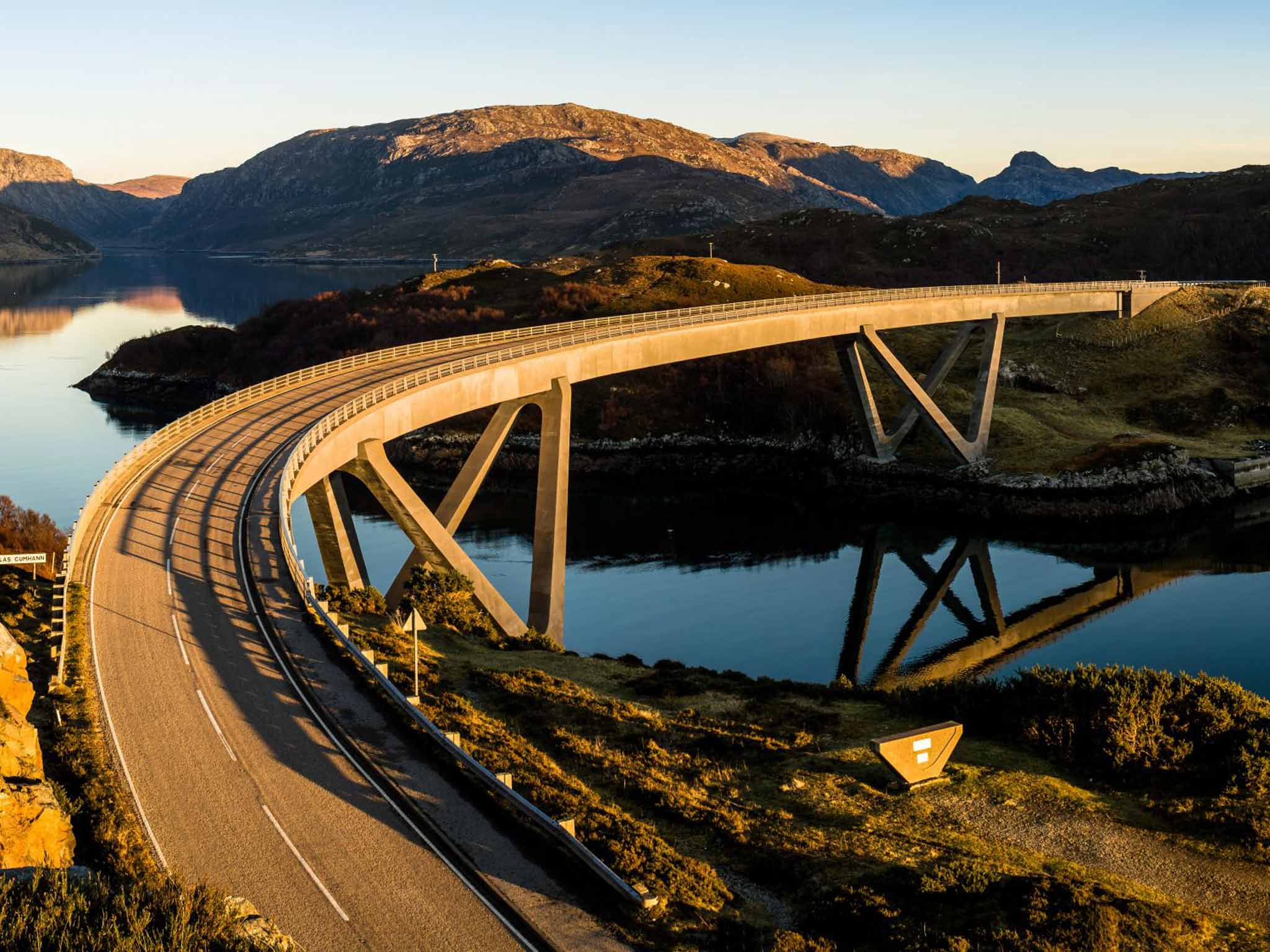The Independent's journalism is supported by our readers. When you purchase through links on our site, we may earn commission.
Scotland's North Coast Trail: A high road to the roof of Britain
Blistered and savage, lonely and unspoiled, the new 500-mile trail is an enchanting expedition for Mark Rowe and family

Your support helps us to tell the story
From reproductive rights to climate change to Big Tech, The Independent is on the ground when the story is developing. Whether it's investigating the financials of Elon Musk's pro-Trump PAC or producing our latest documentary, 'The A Word', which shines a light on the American women fighting for reproductive rights, we know how important it is to parse out the facts from the messaging.
At such a critical moment in US history, we need reporters on the ground. Your donation allows us to keep sending journalists to speak to both sides of the story.
The Independent is trusted by Americans across the entire political spectrum. And unlike many other quality news outlets, we choose not to lock Americans out of our reporting and analysis with paywalls. We believe quality journalism should be available to everyone, paid for by those who can afford it.
Your support makes all the difference.Think of the world's great road trips – the Amalfi Coast, the corniche of the Côte d'Azur, the Great Ocean Road, the Pacific Coast Highway, Route 66 .... And yet I haven't even boarded a plane to get my fix of high-road thrills, of driving into emptiness and – sometimes – thin air. A few hours out of Inverness, my mind is reeling from a road trip utterly removed from the humdrum suburban world of bypasses, dual carriageways and motorway traffic jams.
It's taken nearly four hours to drive barely 40 miles towards and then away from the tiny village of Lochinver, perched high on the north-west coast of Scotland. The journey has involved a stomach-lifting, topsy-turvy drive along the B869, a road fetchingly – and not frivolously – known as the Wee Mad Road of Sutherland, where switchbacks and severe ups and downs lift us past wild coastal scenery. If we'd met a supermarket home delivery van, or a lorry with a mischievous satnav, we'd still be there.
And this is only day one of an epic family road trip around the coastal fringes of northern Scotland. We're heading clockwise out of Inverness, aiming for the roof of Britain. The roads have always been there – the Wee Mad Road feels as though it has been in place since the Picts were in charge – but the whole circuit has been rebranded as the North Coast 500 (so named because it's roughly a 500-mile loop) in the hope that more people will be enticed to come and explore. Not too many, you hope, because a big part of the appeal of this route is the sheer loneliness, the deranged emptiness, of driving for mile after mile and not seeing another car. I find it amazing that such space and solitude still exists on this grand scale in a heavily populated nation.
We join the A894, which does at least pass for a recognisable road. The scenery is anything but run of the mill. This is a part of Britain with resonant names that seem to connect with a distant past, ancient regions called Assynt, Sutherland, Wester Ross, Caithness. The outline of Suilven, the most alien-like mountain I've seen in Britain, is now behind us, pulling out of a stretched landscape like a disfigured stegosaurus. Elsewhere, we spot peaks familiar to National Hunt racing historians, such as Arkle and Foinavon. Stac Pollaidh could moonlight as the mountain from Close Encounters of the Third Kind.
Geologically, it's a blistered landscape – Iceland meets Patagonia. We head north along a road blasted through rock that has not budged for millions of years. The defining characteristic at play is Torridonian sandstone, 700 million years old, and an ancient geology, though a mere babe in arms compared to the 2.8 billion-year-old gneiss rock that burps out of the ground, and which is truly impermeable. Let your imagination go, and you can almost hear the earth groaning.

The colour schemes take us by surprise. Dazzling gorse, the colour of buttercups, twinkles beside shallow aquamarine coastal waters and the deep, dark, peaty lochs. When we pause, we can often hear the brisk clatter of straths and burns tumbling through the endless moors on to the coast. The moors too, seem to ache with biological decay and thousands of years of waterlogging. It's a landscape bursting with emptiness.
The route certainly gets a big tick for wilderness and grandeur. It also deserves full marks for another of those quirks you might wish for in a great route: the great café in the middle of nowhere. We lift the car over yet another pass – surprisingly this is the first time we encounter roadside barriers above a slightly unnerving drop – and spot the northern coast of Scotland for the first time.
We finally rock up in Durness, the approach tracking a fabulously wild road that peers into a glen splattered with erratic boulders, and which seems to have no end to it. We pull up outside Cocoa Mountain, a chocolatier that would not look out of place on the Grand Place in Brussels. We drink enormous mugs of creamy hot chocolate and wander on to Sango Bay, a glorious stretch of beach that would be covered in deckchairs were it positioned near Blackpool. The children set up the cricket stumps and play what at that moment is the UK's most northerly test match.
Onwards, eastwards. The inland waterscape is mesmerising: vast bodies of water, finger-like sea lochs stab inland between the mountains, replete with more evocative names, such as Loch Eriboll, the Kyle of Tongue.

We are taken by surprise at John O'Groats, which has had a facelift since my last visit. This is mainly down to the intervention of the Natural Retreats group, which has refurbished the old John O'Groats Hotel, painted it in the colours of a Battenberg cake and refurbished the interior into penthouse apartments. Nearby, the chain's distinctive, aesthetically pleasing lodges gaze serenely out to sea. The township still has a post office, a bakers, a decent cup of coffee and a farm shop.
Our other discovery is that for decades pilgrims to John O'Groats have been hoodwinked: it is neither the most northerly point of the UK mainland, nor the most north-easterly. We reason this out on a day trip across to Orkney. As we look back at the mainland, high cliffs tumble into the sea right along the eyeline. Dunnet Head clearly reaches further north, and to the east the UK tapers upwards to its north-easterly extremity, Duncansby Head.
Later, we visit Duncansby Head, a mile or two east of John O'Groats. It looks how the edge of an island nation should look: pointy sea stacks lurching out of a frothy sea, sheer cliffs, and dramatic clefts in which seabirds have nervelessly chosen to nest. Great skuas, big and scary and known locally as bonxies, patrol the skies while puffins huff past.
Close by, we visit the Castle of Mey, the late Queen Mother's old residence, a textbook castle of honeyed Caithness stone, with an echoing spiral staircase. Curious touches stand out, such as her drinks cabinet and the soft-toy Loch Ness monsters that she requested be placed on curtain rails. The small farm and its chipmunks delight the children.
A sharp right-hand turn by the John O'Groats' farm shop turns us south for the first time, and the A99 threads through the lonely, vast moors of Caithness. I wondered if the route might peter out at this point, but instead the road and its successor, the A9, prove to be one of the world's thrilling coastal highways, with views far south to the distant Moray Firth.
We are struck by how handsome and vibrant many of the towns are: Brora (where we pause at Capaldi's Italian ice cream shop), Golspie and Dornoch, where we make our way to the beach. It's warm enough to sit in shirt sleeves as our children explore the rock pools. Behind us, perhaps six miles distant are rocky peaks smothered in snow, even now, in high summer.
We close in on Inverness, for a breathtaking finale, driving alongside the Cromarty Firth where we're taken aback by the vast, doleful collection of oil rigs that have been positioned in the firth's deep waters, awaiting deployment or a refit. Then, a quick skip across the Kessock Bridge, which arcs gracefully across the Moray Firth, and we've come, if not full circle, then full loop.
My wife turns to me. “We've missed something,” she says. “Tantrums”. Some of our friends considered us mad for taking three children in a car on such a road trip with no electronic devices to distract them. But perhaps it was proof that big beaches, big scenery and big hot chocolates are sufficient to keep even the most fidgety of passengers happy.
Getting there
Mark Rowe travelled to Inverness on the Caledonian Sleeper (0330 060 0500; sleeper.scot). A bed starts from £66.30, one way, from London Euston to Inverness.
He returned on daytime services with the Highland Chieftain (virgintrainseastcoast.com) and Cross Country Trains (crosscountrytrains.co.uk).
Ferries from Scrabster to Stromness are operated by NorthLink ferries (northlinkferries.co.uk).
Staying there
He stayed at the Kingsmills Hotel, Inverness (01463 237166; kingsmillshotel.com) which has double rooms, including breakfast, from £110.
A three-bedroom lodge at Natural Retreats John O'Groats (01625 839382; naturalretreats.com) starts at £462 for two nights.
More information
Join our commenting forum
Join thought-provoking conversations, follow other Independent readers and see their replies
Comments